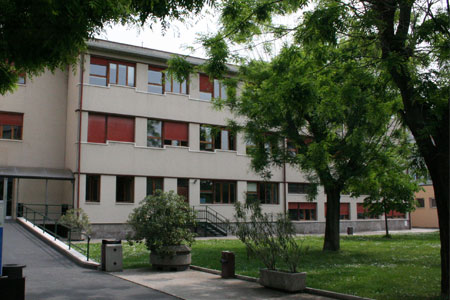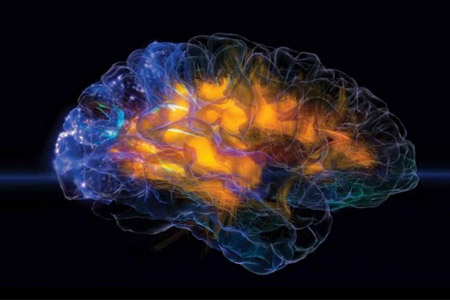IMPORTO COMPLESSIVO: Euro 92.000,00
OBIETTIVI PRINCIPALI:
Multiple sclerosis (MS) is a demyelinating autoimmune disease of the central nervous system (CNS), in which the autoimmune response targets antigen(s) of myelin and of myelin-producing cells, the oligodendrocyte. Current hypothesis for autoimmune diseases
suppose an infection triggering a pathogen-driven immune reaction; however, the molecular mimicry between a foreign and a self-antigen may trigger an autoimmune disease, which will involve those tissues harbouring the self antigen. In the case of MS, the putative autoantigen is localized in the white matter (Raine 1999). At present the pathogen responsible for as well as the self antigen recognized by the autoimmune reaction in MS have not been identified yet (Cross 2001). Nevertheless, once the autoimmune response is triggered, tissue damage is mediated by several mechanisms; among these, several lines of evidence have assessed the fundamental role of B and T lymphocytes in MS pathogenesis (O’Connor 2001). In particular, the production of autoantibodies able to recognize myelin and/or oligodendrocyte antigens has been re-evaluated and has been associated with demyelination and cytotoxic damage to oligodendrocytes (Archelos 2000). The role of antibodies in MS has been confirmed by pathological studies, which identified antibody-mediated MS lesions subtypes (Lucchinetti 2000). In addition to demyelination, anti-neurofascin IgG present in MS patients have been shown to display a pathogenetic role in axonal damage (Mathey 2007).
The presence of seric antibodies against myelin antigens has been suspected several years ago by indirect immunohistochemistry (Abramsky 1977) and recently confirmed by other groups (Lily 2004; Marconi 2006). However, despite extensive efforts spent in the last decades, autoantigens triggering autoimmune responses in MS remain still unidentified. In this regard, a number of myelin molecules have been taken in consideration and tested in animal models: among these, myelin basic protein, proteolipid protein and myelin-oligodendrocyte glycoprotein (MOG) have been deeply investigated (Egg 2001; Berger 2003). For all of them, the presence of antigen-specific antibodies in the serum and cerebrospinal fluid (CSF) as well as of antigen-specific T lymphocytes has been extensively investigated in MS patients over the past two decades. Experimental and clinical evidence indicate that MOG is one of the favourite candidate autoantigen. In line with this, anti-MOG antibodies have been associated with myelin damage in lesions of MS and experimental autoimmune encephalomyielitis (Genain 1999; Raine 1999). However, the diagnostic and pathogenic role of MOG has not been confirmed in MS patients (Lampasona 2004). In general, a plausible explanation for the poor results obtained so far about MS-specific neural autoantigens may rely on the use of recombinant molecules (Gilden 2001; Cross 2001). Such approach, in fact, is not suitable for the study of autoantibodies recognizing protein epitopes with post-translational modifications (such as glycosylation, lipo-conjugation, etc.). In this regard, several studies have demonstrated the relevance of post-translational modifications of autoantigens in a number of autoimmune diseases including MS (Delves 1998; Dharmasaroja 2003).
For this purpose, we applied a proteomic approach to discover IgG autoreactivity to neural antigens, using human white matter as source of natural molecules and after bi-dimensional protein separation. Our study showed that, within a complex array of autoreactivity, a restricted number of neural proteins were specifically recognized by either MS (Lovato, submitted) or HE patients (Gini, in press). Regarding MS, the most frequently recognized molecules by serum and CSF IgG were specific isoforms of 2’-3’ cyclic nucleotide 3 phosphodiesterase (CNPase) type I and transketolase (TK), respectively. CNPase is a well known oligodendroglial marker and autoreactivity to this enzyme has been already demonstrated in MS (Walsh & Murray 1998). Our study showed that TK, which was recognized by 50% of MS CSF IgG, was also mainly expressed on oligodendrocytes and its presence was markedly decreased in MS plaques. Transketolase is a thiamine-dependant enzyme of the pentose phosphate pathway (PPP) with a major role in fatty acid biosynthesis. The distribution of TK suggests that an autoimmune response to this molecule would damage oligodendrocytes. The hypothesis that TK may be implicated in the pathogenesis of a demyelinating disorder is further supported by the involvement of TK in another disease with demyelinating features, such as the Wernicke-Korsakoff syndrome, where TK is dysregulated by thiamine deficiency (Hazell 1998).
Beside the two major autoantigens CNPase I and TK, our study showed that also the other MS-specific proteins were differently recognized by serum and CSF IgG, indicating a highly compartimentalized autoimmune response within the CSF. This finding probably reflects the IgG intratechal syntesis with the formation of oligoclonal bands (OB), a very distinctive feature in MS patients (Correale 2002). Recent studies have confirmed that the clonal expansion in MS CSF leading to the formation of OB is probably the result of chronic antigen-driven stimulation of CSF B cell clones (Gilden 2001). Despite the extensive efforts spent over the past thirty years, the autoantigen(s) targeted by OB IgG have not been identified so far and the identification of the causative agent of MS has become the “Holy Grail” of neuroimmunologists.
Beside its diagnostic role, the discovery of the autoantigens toward which the autoimmune response is directed in MS would have profound impact also in terms of pathogenesis. In fact, in addition to serve as diagnostic/prognostic markers, the accurate definition of the neural antigens targeted by autoreactive IgG will be instrumental for a better comprehension of MS pathogenesis and may help to identify the critical epitopes shared with pathogens and open new fields of research.







